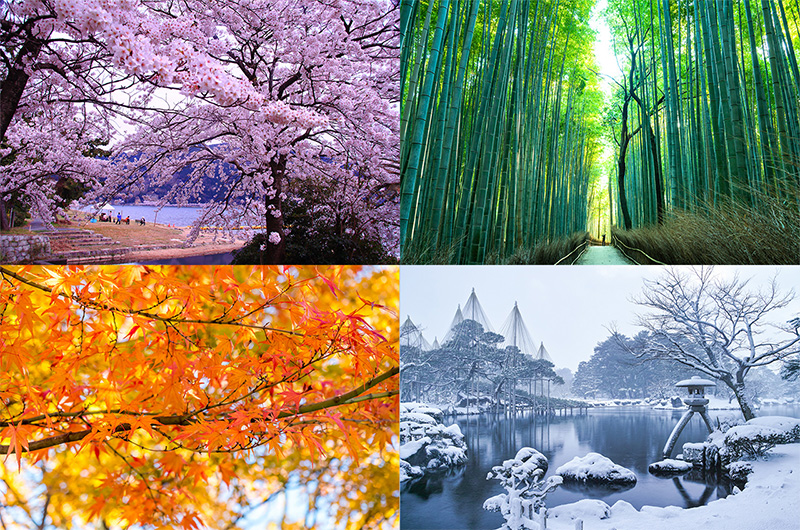2. Food that Embodies the Seasons & an Appreciation
for Seasonal Foods
Japan is made up of a series of around 3,500 islands, with a long shape that stretches from north to south. This means that climates varies dramatically from region to region, from the subarctic conditions of HOKKAIDO in the north, to the subtropical conditions of OKINAWA in the south, to the main island of HONSHU which is a mostly temperate zone. Furthermore, Japan is also a humid and rainy country, with four distinct seasons: spring, summer, autumn and winter. Thanks to Japan's climate and topography, an abundance of exceptional produce can be harvested across the country, that varies by region. Also, thanks to the wet climate, Japan has been able to develop condiments such as miso and soy sauce, which have become an indispensable part of Japanese cooking.

In Japanese, there is the word "Shun", which is used specifically to describe foods like seafood and vegetables at their seasonal peak, when they are at their tastiest and most nutritious stage. Being able to feel the changing seasons through seasonal produce is one of the charms of Japanese cuisine. There are other terms used to describe "Shun", like "Hashiri", which is the early part of the season when produce is just starting to ripen. Then comes wistful "Nagori", which describes the end of the season, when produced is past its prime. The idea behind "Shun" in Japanese cuisine, helps us to enjoy not only the changing seasons, but to enjoy different flavors of the same ingredients throughout the year.
For example, "Hashiri" vegetables are tender and tasty even when raw, while "Nagori" vegetables include many which are rich in flavor and sweetness, like eggplant which is harvested in autumn. We can enjoy "Shun" by incorporating these flavors of seasonal foods into cooking methods.
These days, selective breeding and improved distribution methods mean that the amount of foods available all year round have increased. However, being familiar with the changes of nature, while taking in the seasons through food, is one of the best aspects of Japanese cuisine, and is something that we should continue to cherish.